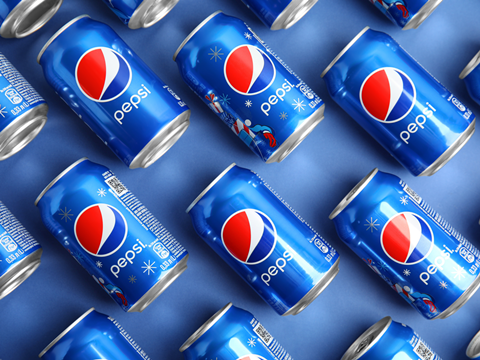
Citing roadblocks outside its control, PepsiCo has scaled back its packaging targets for 2030, switching its 20% virgin plastic reduction goal to a 2% year-on-year decrease and removing biodegradability from the scope of its sustainable design goals.
The PepsiCo Positive (pep+) initiative was launched in September 2021. So far, the company claims to have made ‘positive strides’ on its sustainable packaging and climate change ‘while accounting for external realities and business growth’.
However, the company has revisited its packaging, climate, agriculture, and water goals in hopes of ‘build[ing] a stronger, more resilient business that aims to drive scalable positive impact’.
Originally, PepsiCo sought to achieve a 20% reduction in absolute tonnage of virgin plastic derived from non-renewable sources by 2030. In 2023, it has only reduced 1%.
As a result, it has scrapped its original 2020 baseline and switched to an average year-over-year reduction of 2% within the same time frame.
While it had intended to design 100% of its packaging to be recyclable, compostable, biodegradable, or reusable by 2025, it predicted in its 2023 ESG Summary Overview that it would fall short of this target – having reached 89% in the same year.
Now it sets its sights on achieving at least 97% reusable, recyclable, or compostable primary and secondary packaging in its key packaging markets by 2030, having removed biodegradability from its scope.
However, the company emphasizes that over 85% of its global packaging footprint by weight could be attributed to primary and secondary packaging last year – and that any packaging it designs to be reusable must also be recyclable or compostable.
Its recycled content target for plastic packaging has been downscaled from 50% by 2030 to at least 40% by 2035 or sooner, now applying solely to primary packaging in its key packaging markets. This adjustment comes after the company reported 10% progress towards this goal in 2023.
It has also walked back on its original goal to scale new business models to minimize or avoid single-use packaging materials – including reusable and refillable packaging, prepare-at-home solutions, and concentrates like powders or drops – but it emphasizes that it continues to track reusability via its reusable, recyclable, and compostable packaging goal.
By revising its targets, PepsiCo says it is being transparent about limitations outside its control – raising the examples of China’s ban on implementing recycled PET into food-grade packaging, as well as India’s recent decision to permit rPET in beverage packaging in 2023 and food packaging in 2025.
At the same time, it claims to recognize areas where it can accelerate impact, achieve greater return on investments, and strengthen the resilience of its business to focus on areas where, in its view, it can have the ‘most positive’ impact.
“The company is remaining ambitious with its sustainability targets, evolving with the latest science, and being pragmatic about where efforts have been limited by external factors and systemic barriers, such as lagging infrastructure and the growth of the business,” PepsiCo said in a press release.
“As circumstances evolve, PepsiCo continually adapts how we source ingredients; make, move, and sell our products; and inspire people through our brands,” said chairman and chief executive officer Ramon Laguarta.
“This journey is underpinned by pep+, which is an investment in building a stronger and more resilient business – today and in the future – and guides our actions to help create a more resilient, more sustainable food system. Our goals must evolve with us to keep our ambition and to deliver on our long-term vision.”
Oceana has expressed concerns with this decision, with senior vice president of Strategic Initiatives Matt Littlejohn stating: “By killing its reuse goal, and other goals that would actually reduce plastic packaging, Pepsi is hurting our oceans and the environment. Pepsi is one of the largest polluters in the world according to the Break Free from Plastic Brand Audit and has a responsibility to address its plastic problem.
“The best way for Pepsi to reduce plastic pollution is not by abandoning goals but by dramatically increasing the use of refillable bottles – which can be used up to 50 times if made of glass. Just a 10% increase in reusable beverage packaging by 2030 can eliminate the need for over 1 trillion single-use plastic bottles and cups and could prevent 153 billion of these containers from getting into the world’s oceans and waterways.”
The Coca-Cola Company made a similar decision to lower the ambition of its voluntary environmental goals last year. The new targets include a 10-15% reduction in its recycled content target for primary packaging by 2030; and, within the same time frame, switching from collecting and recycling a bottle for each one sold to collecting 70-75% of the equivalent number of bottles and cans it brings to market each year.
Meanwhile, Coca-Cola HBC says it has designed all its PET, glass, aluminium, and aseptic carton primary packaging for recyclability since 2022, thus achieving its 100% target three years early. On the other hand, it may still have progress to make with recovering materials and implementing recycled plastic content into its packaging.
If you liked this story, you might also enjoy:
The ultimate guide to the Packaging and Packaging Waste Regulation in 2025
How are the top brands progressing on packaging sustainability?
Everything you need to know about global packaging sustainability regulation in 2025
The key to increasing the use of reusable packaging in supermarkets






















No comments yet